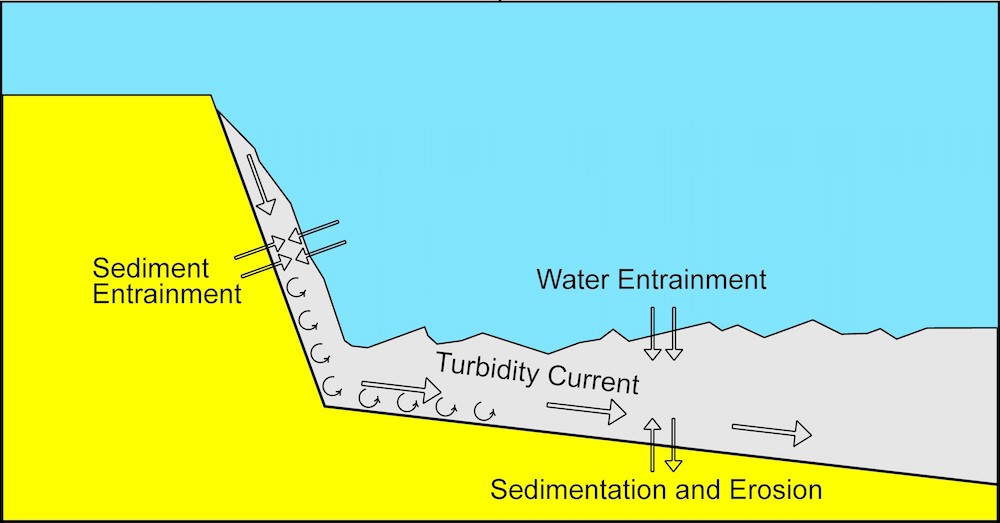Underwater flow slides, which occur when submerged soil destabilizes and accelerates down a slope, can damage or undermine crucial seafloor and hydraulic structures. Flow slides caused by breaching are especially concerning to engineers because they trigger destructive, sediment-laden turbidity currents capable of destroying telecommunications cables as well as pipelines, wellheads, and other offshore drilling infrastructure.
Because of their unpredictability and broad areal extents, turbidity currents generated by breaching have rarely been studied, even in the laboratory. Researchers now report results from a series of unique, large-scale experiments on breaching flow slides that may have implications for protecting seafloor structures.

Alhaddad et al. developed their experimental setup in a 2-meter-tall tank in which they created oversteepened, and thus unstable, slopes of sand at angles of between 50° and 80°. After removing a temporary confining wall to trigger a shower of sand that entrains surrounding water, the researchers used state-of-the-art instrumentation, including video cameras, ultrasonic velocity profilers, and conductivity meters, to document each resulting turbidity current.
The data they collected indicated that breaching-generated turbidity currents are self-accelerating, with their entrainment of sediment and acceleration connected in a positive feedback loop. The results also showed that the lower portion of each breach face erodes faster than the upper part, leading to an oversteepening of the slope. This oversteepening in turn creates an overhang that eventually fails, generating a surface slide that temporarily increases the rate of erosion as well as the suspended-sediment concentration. Ultimately, these changes make turbidity currents denser and faster, although the degree to which these effects influence real-world turbidity currents remains uncertain.
This is the most comprehensive experimental study to date on breaching-generated turbidity currents. The study’s findings apply to submerged portions of riverbanks as well as to steep areas of the seafloor, the authors noted, indicating that these phenomena must be incorporated into future erosion models to predict accurately how they could affect submerged infrastructure. (Journal of Geophysical Research: Earth Surface, https://doi.org/10.1029/2020JF005582, 2020)
—Terri Cook, Science Writer

